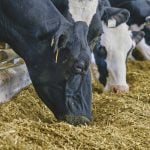How do you get more from less? Ask the Canadian dairy industry. Since 2005, the number of dairy farms in Canada has fallen by 15 per cent. The number of cows is down 3.7 per cent. But the annual volume of milk produced has increased 3.6 per cent over the past five years, according to







